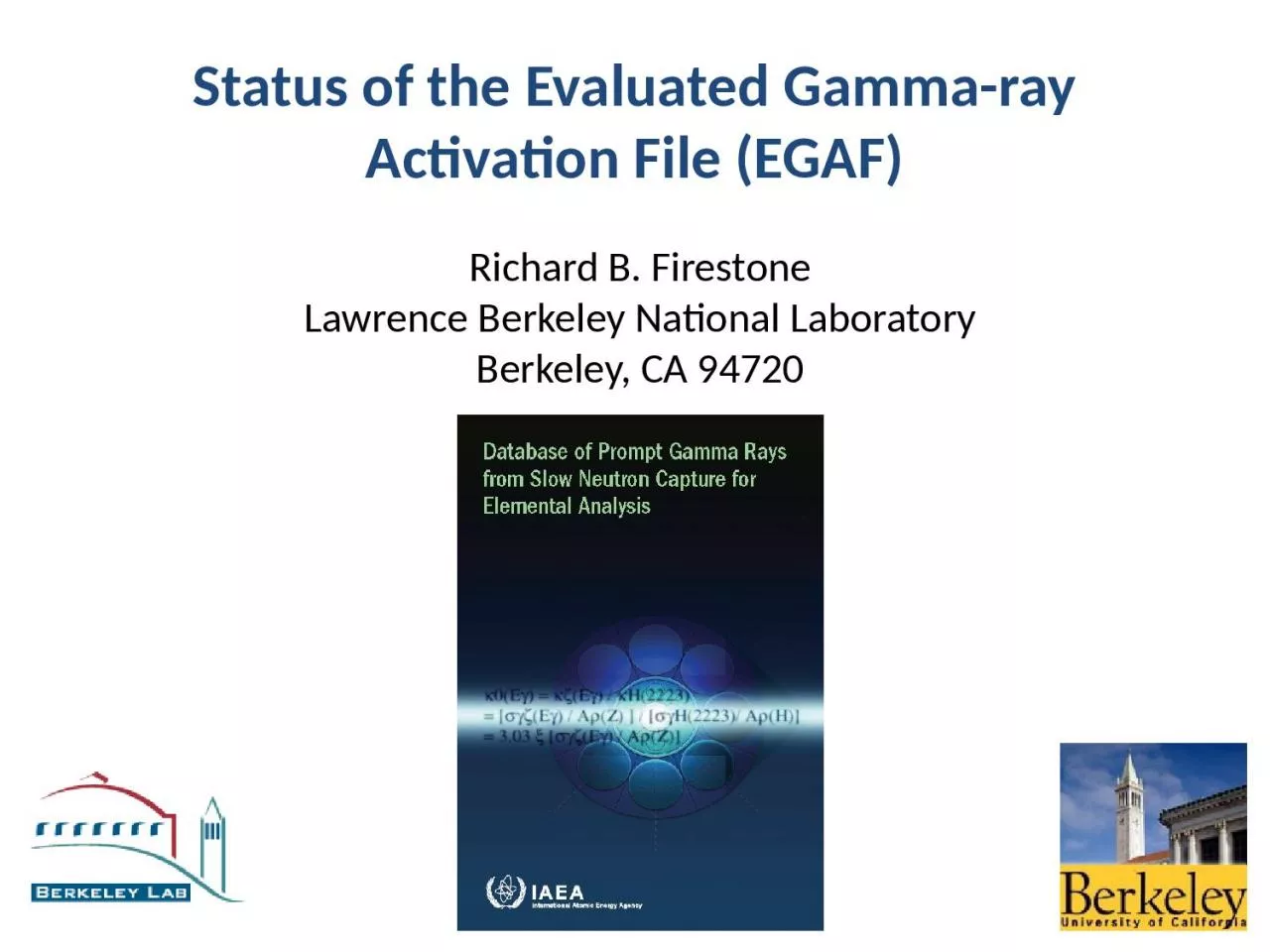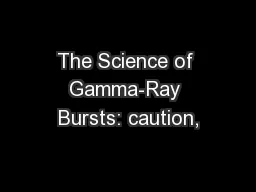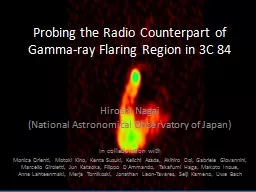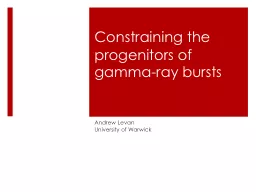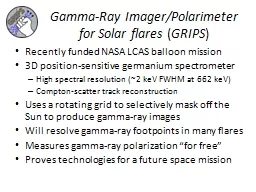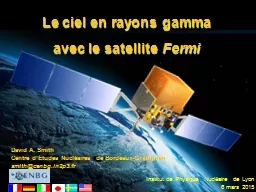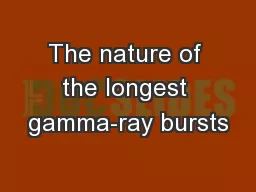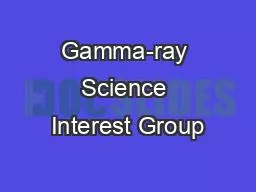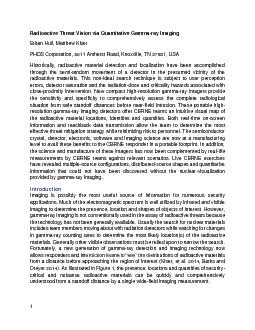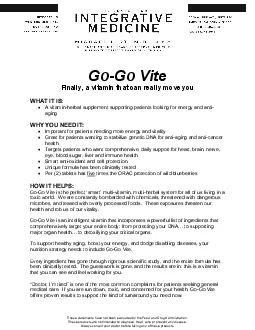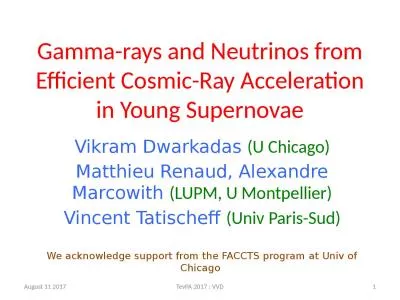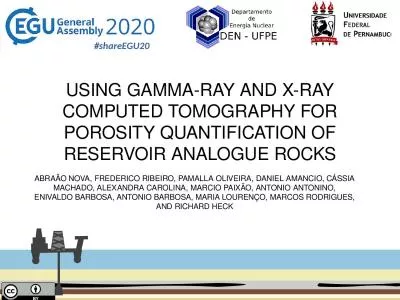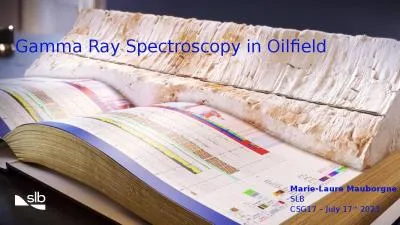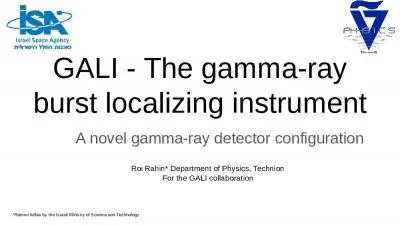PPT-Status of the Evaluated Gamma-ray Activation File (EGAF)
Author : susan2 | Published Date : 2022-06-28
Richard B Firestone Lawrence Berkeley National Laboratory Berkeley CA 94720 About EGAF The EGAF database is the result of an IAEA CRP to evaluate thermal neutron
Presentation Embed Code
Download Presentation
Download Presentation The PPT/PDF document "Status of the Evaluated Gamma-ray Activa..." is the property of its rightful owner. Permission is granted to download and print the materials on this website for personal, non-commercial use only, and to display it on your personal computer provided you do not modify the materials and that you retain all copyright notices contained in the materials. By downloading content from our website, you accept the terms of this agreement.
Status of the Evaluated Gamma-ray Activation File (EGAF): Transcript
Download Rules Of Document
"Status of the Evaluated Gamma-ray Activation File (EGAF)"The content belongs to its owner. You may download and print it for personal use, without modification, and keep all copyright notices. By downloading, you agree to these terms.
Related Documents

